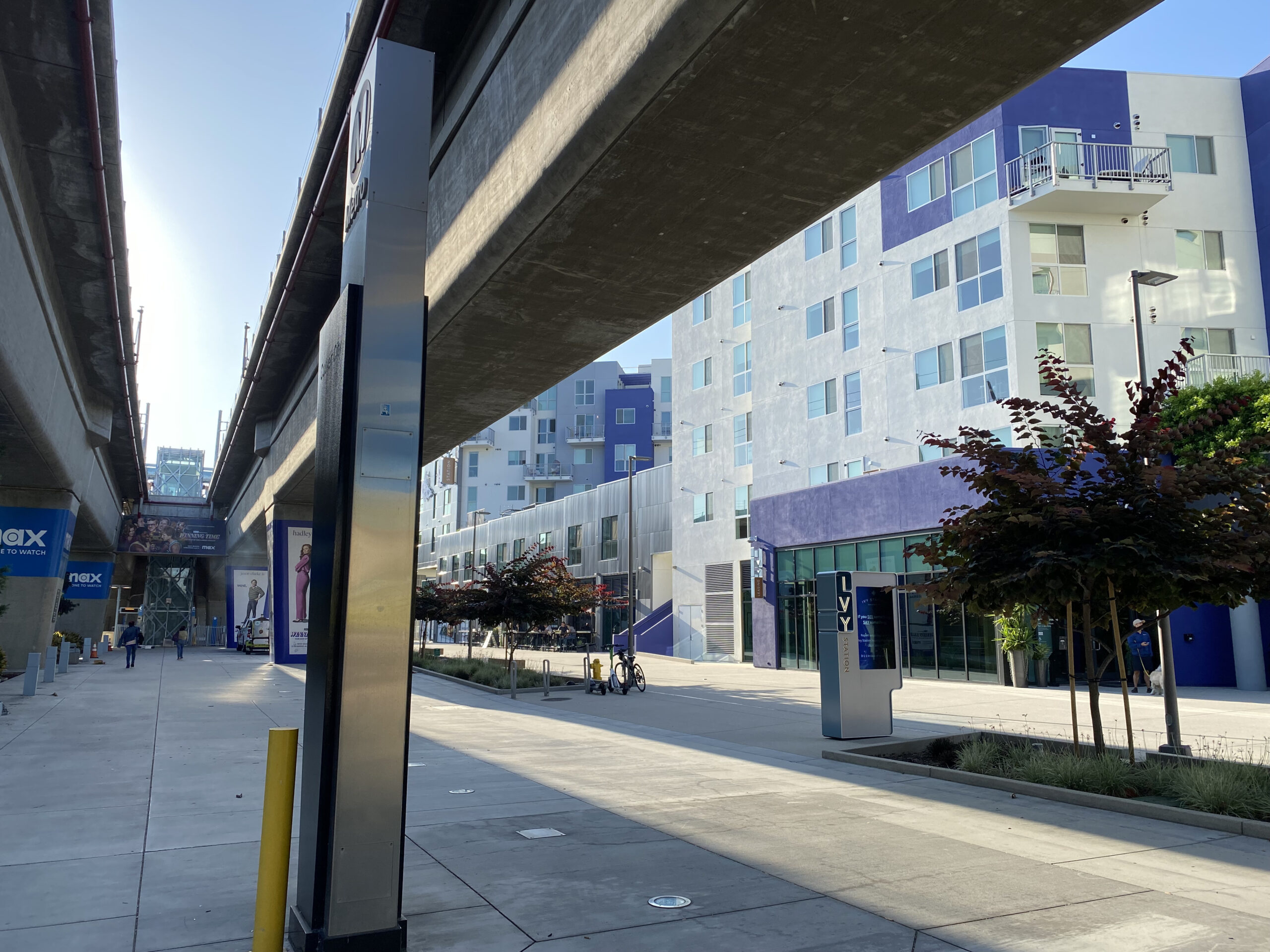
A mixed-use development is a property that has both residential and commercial elements.
Mixed-use property can be small, like a narrow three-story building on a side street that has a restaurant on the street level, while the upper floors contain apartments. It can also be a colossal complex or parcel of land containing a mix of stores, restaurants, and offices with housing.
Buildings with an office or storefront down below, while apartments are on top, are one of the simplest and most common types of mixed-use development throughout the world. But they’re not the only kind. Modern mixed-use developments are going through interesting evolutions as social and economic shifts affect what people want in urban planning and design.
The demand for housing in the greater Los Angeles area keeps increasing despite hundreds of thousands of residents leaving the state. With thousands more Californians left unhoused, ever-rising rents and homeownership increasingly out of reach, state legislators proposed a plan to build 2.5 million more housing units by 2025.
A key provision of this plan involves relaxing zoning laws to allow for higher housing density. While this housing plan is a statewide initiative, the unique history and present zoning quandaries in Los Angeles point towards innovation beyond tried-and-true multi-family housing.
Los Angeles is embracing mixed-use development, and its future in this city looks bright.
How Did Los Angeles Become More Open to Mixed-Use Development?
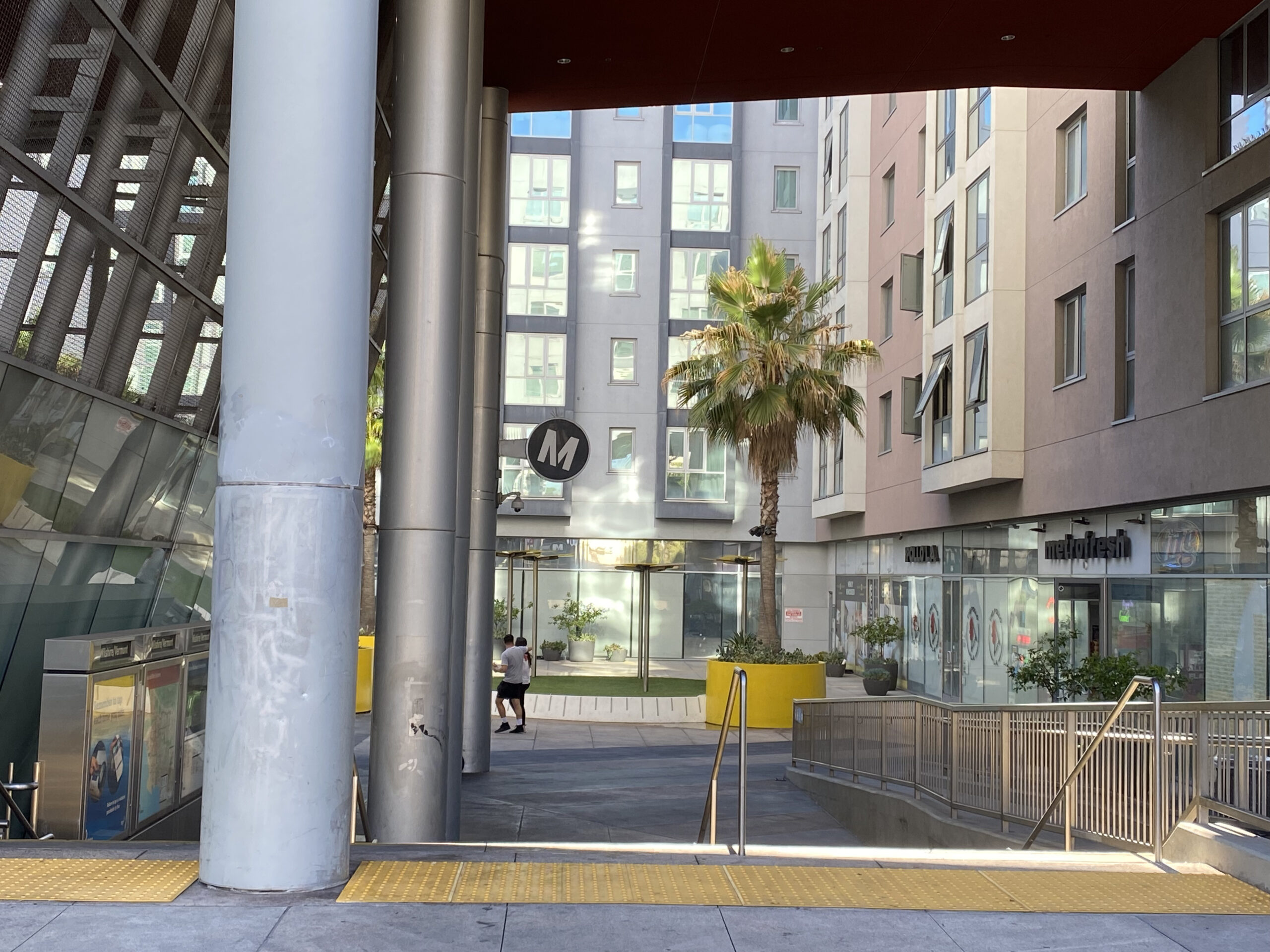
The 2020s is a unique point in Los Angeles history. As the city struggles with a housing crisis and a desperate need for more units, the tide has turned in decades-long fights for building more multi-family homes. This has triangulated with other social and policy shifts, such as the expansion of Metro’s coverage areas.
Single-family homes remain a highly-desirable form of housing in and near the City of Los Angeles. This hasn’t stopped sociocultural preferences from evolving: surging favor for the “15-minute city model” has removed long-held stigma from apartments and condos, even in sprawling Angel City.
Modern city dwellers, even suburban residents, are turning away from the old model of completely separating residential blocks from dining, shopping, recreation, and services. To achieve the density of multi-family housing and the convenience of the 15-minute city, a sharp increase in mixed-use development is the answer.
From an urban planning perspective, mixed-use development is a smart move that provides more revenue to the city and state. More property taxes, sales taxes, and income taxes can be efficiently collected from the residences and businesses located in a single lot. The tax base is significantly narrower if the lot houses one single-family home or just one business.
With recent efforts to address decades of housing policy inequities and increase transit use, mixed-use development is being encouraged at the city and state levels. Keeping with Koreatown’s proliferation of mixed-use development, a new mixed-use complex on 8th and Western is under construction.
The developer initially had different plans for remodeling the Pellissier Square Garage, such as building a hotel in addition to apartments. However, after the enactment of Measure JJJ, the City’s Transit-Oriented Communities plan to introduce more affordable housing and increase multi-family building; they changed plans to take advantage of the garage’s proximity to the Wilshire-Western transit and nightlife hub.
What Makes Mixed-Use Development in Los Angeles Work?
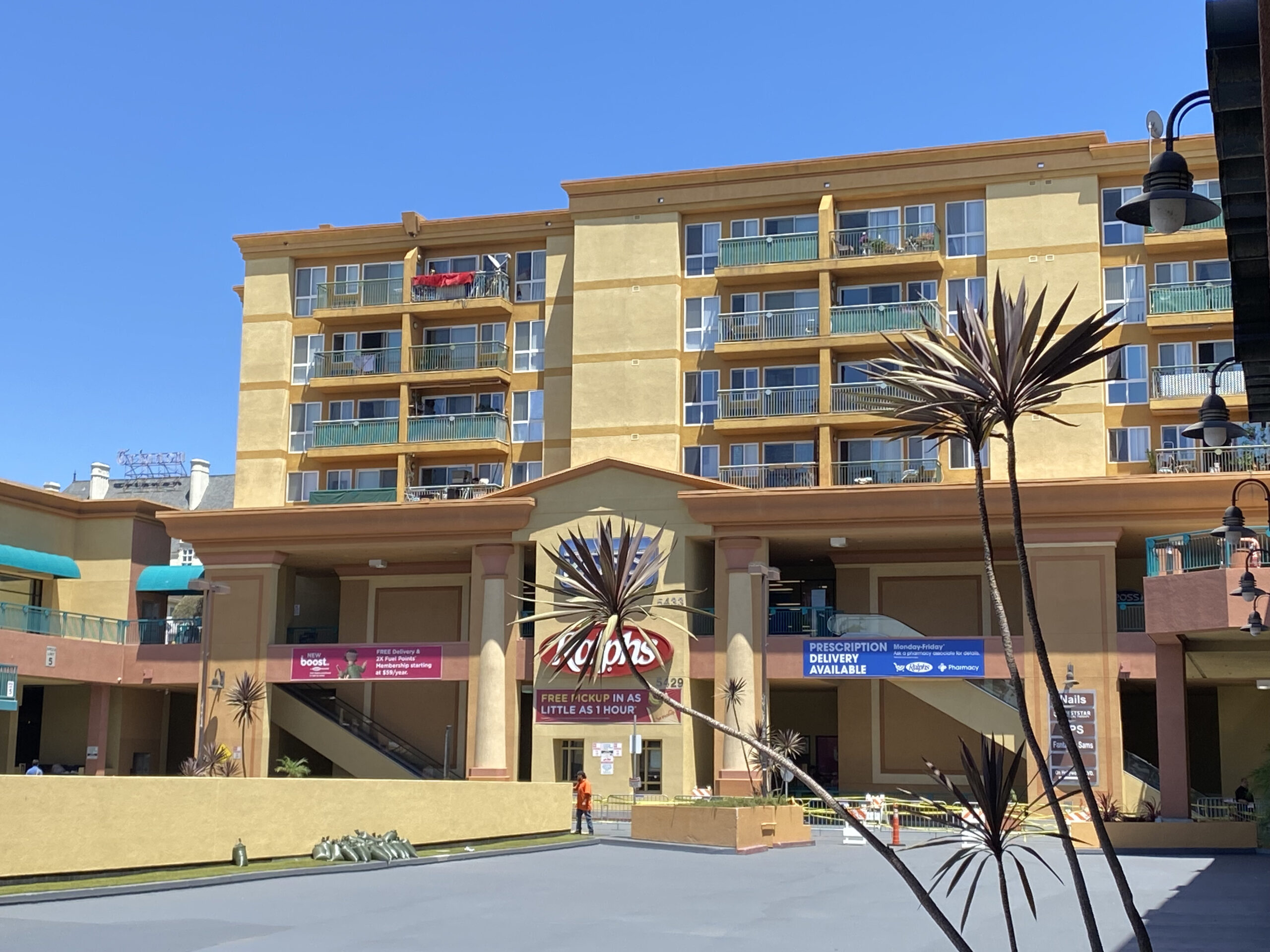
Los Angeles and environs present totally unique opportunities, but also roadblocks, to creating new mixed-use developments and improving existing ones. This is because in North America, mixed-use development is more likely to be built around transit hubs and major arterial roads than the style of “low-impact” semi-commercial spaces found farther from main thoroughfares like you see in Europe and Asia.
Major Metro hubs like 7th Street Metro Center and Wilshire-Western don’t have “proper” mixed-use development. Rather, the blocks surrounding these stations are teeming with commercial activity while apartment buildings are separate but nearby.
The development in the above photo, Hollyview Apartments, is a senior housing complex built into a large shopping center with an open-air parking lot. While Hollyview fits the definition of mixed-use, it isn’t built around the Hollywood-Western Metro station.
This is in contrast to Wilshire Vermont where the mixed-use complex is built around and above the Wilshire-Vermont Metro station. A similarly-named mixed-use complex, The Vermont, sits across the street atop a yoga studio, nail salon, a bank, and chain restaurants like Buffalo Wild Wings and Starbucks.
Low-impact mixed-use developments are usually at least 2-3 blocks from these major infrastructure arteries and off to the side streets. Because driving up to them, and thus parking there, isn’t required, sidewalks can be wider and more space utilized for businesses and socialization.
Even though Los Angeles is still very car-centric despite the incredible strides with transit, you can actually find rare patches of low-impact mixed-use development in some areas.
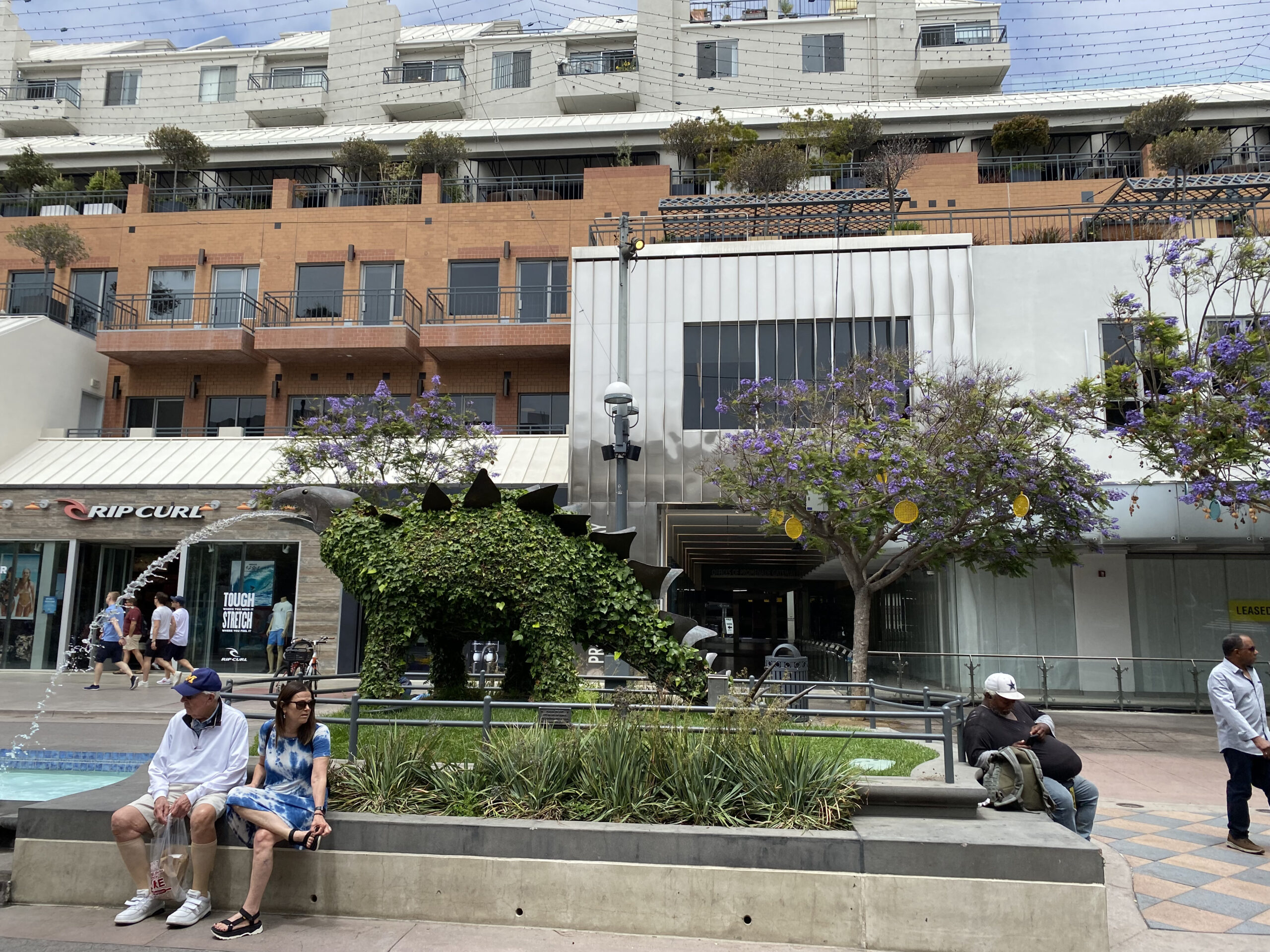
Santa Monica is an interesting illustration of these low-impact commercial spaces on a smaller scale, even if some of the blocks wouldn’t be considered “true” mixed-use because the apartment complexes are next to commercial properties instead of built within the same one.
The 3rd Street Promenade is mostly closed off to cars to encourage shopping, dining, and recreation among residents and visitors alike. Residences on Third Street is the chief mixed-use development in the area, built directly into the promenade.
The closer one gets to the waterfront, where most of the prime oceanview real estate is held by hotels or apartment complexes, the more pedestrian-oriented the area becomes. This is where more low-impact and car-free areas start to crop up since parking garages are mostly confined to downtown Santa Monica and the official state beach parking lot.
Still, mixed-use developments in Los Angeles are more likely to be built around a major street, attraction, or single Metro station rather than a large transit hub. Park La Brea, a massive mixed-use development of an entirely different class known as a “planned community” dating back to the 1930s, is situated along three major arterial streets that are footsteps from The Grove, Fairfax Farmers Market, and LACMA.
What makes a Los Angeles mixed-use development successful, aside from being able to attract residents and commercial tenants? This requires a different nuance than more transit and pedestrian-oriented cities around the world or even America’s more walkable cities like New York and Chicago.
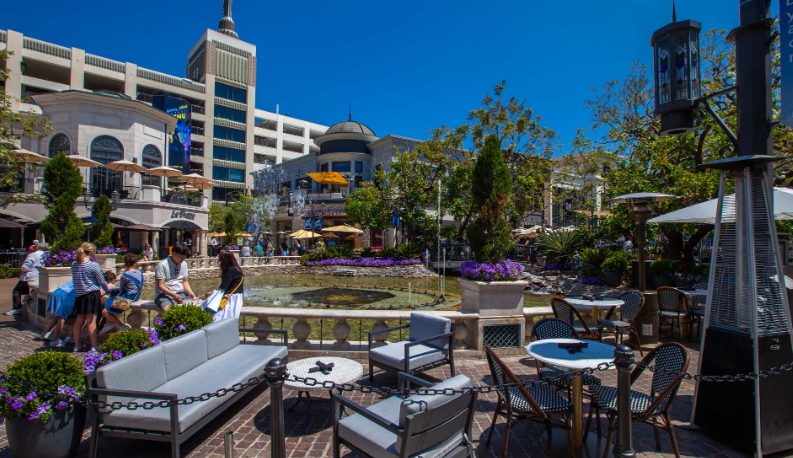
Placement is a major factor. Most of the commercial spaces in Wilshire Vermont’s plaza have sat empty since the onset of COVID. 2022 saw the slow departure of other commercial tenants, including Chase Bank, despite being situated on two major avenues above a sizeable transit hub.
Even though there’s plenty to do in Koreatown and other high-density housing nearby, the shops are located just a little too far from the street level with an underground parking lot. The sprawl one expects at a destination like The Grove or Ivy Station in Culver City works against Wilshire Vermont’s commercial aspect. Unlike The Grove and the promenade in Santa Monica, the area isn’t as popular with tourists and visitors.
This is an aspect that often puts proposals for mixed-use development at an impasse: What types of businesses operate in these spaces? What makes sense for the location? Residential tenants or home buyers are more likely to be detracted by tourism traffic and noise, but commercial tenants thrive on that kind of foot traffic.
The type of commercial tenants also matters. Their success depends on the location, the demographics of the residents in the same complex and neighboring apartment complexes, and the number and nature of commercial tenants in that development. If an apartment complex is mostly studio and 1-bedroom units occupied by single professionals, a family-oriented restaurant downstairs wouldn’t generate the revenue that a fast-casual one would.
The relationships that the landlord or condo development forms with commercial tenants can impact the success of the mixed-use model. Looking at Broadcast Center on Beverly Boulevard, it isn’t part of the same lot as The Grove (which is solely commercial).
Rather, the destination upmarket grocery store Erewhon is its sole commercial tenant. Broadcast Center makes a point of advertising this on their website and formed a partnership that enables tenants to pre-order meals and get free grocery delivery. Providing these types of exclusive benefits certainly creates value for potential residents.
The sheer number of commercial tenants also affects the desirability and profitability of mixed-use developments in Los Angeles. It’s difficult to say how many are too many because commercial traffic isn’t solely generated by that development’s residents.
But when you look at the wide variety of commercial tenants in the Hollyview complex, they range from casual restaurants to law offices with discount department store Ross and grocery store Ralph’s as the anchor tenants. Anchor tenants like these are only viable on blocks that have more space for commercial usage, but they can attract customers who will stay longer and spend more money there.
As more mixed-use developments are built in Los Angeles in the coming year, they may copy the Hollyview model by having a grocery store or big-box store as an anchor. Professional services like medical and law offices benefit from the convenience of being near clusters of restaurant, service, and retail businesses and possibly transit.
Others may take similar actions to Broadcast Center and work closely with a smaller number of commercial tenants to get the residents to regularly spend money there.
The Future of Mixed-Use Development in and Near Los Angeles
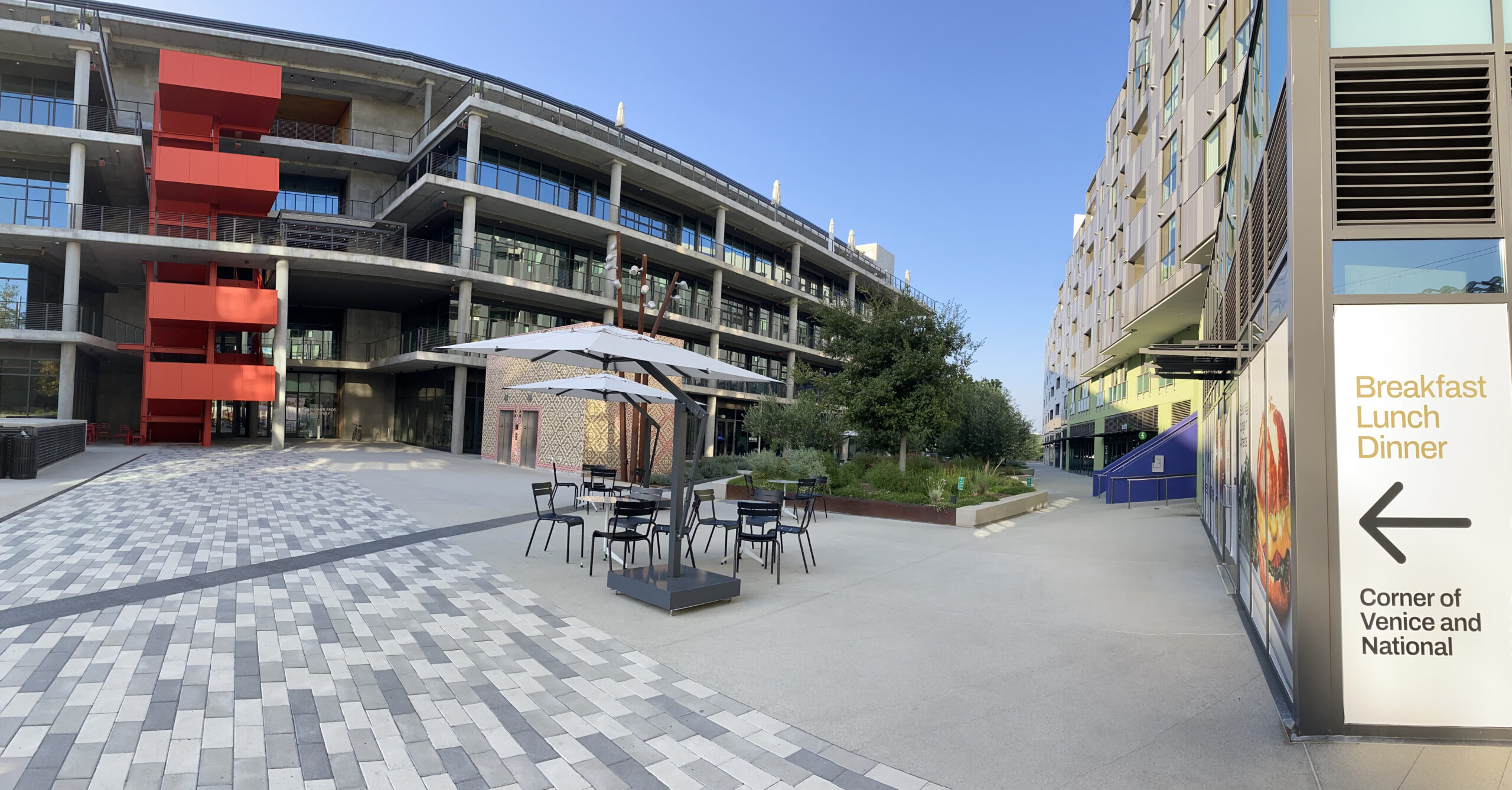
LA is a menagerie of different zoning and building types. There are scant cities in America, or even the world, where you can find such a fascinating gumbo of housing types forged by necessity, innovation, and the tenacious clinging to the California Dream, but also hubris and hegemony.
The extremes of the American experience embody the sheer scale of housing in Los Angeles. Nowhere else will you find 200 square foot bachelor apartments going for what a mortgage payment used to cost in the same Congressional district as clusters of secluded manses that have more bathrooms than inhabitants. Suburban-style blocks ensconce 1920s-era bungalow courts that were designed with a purpose opposite of suburbia: a way to make single-family style homes more accessible and encourage neighborly relationships.
Los Angeles was initially reluctant to embrace mixed-use development once the city departed from its roots as a streetcar city into one defined by freeways. But with bygone versions of the California Dream simply becoming unattainable, like once-affordable bungalows now carrying price tags closer to $1 million, the dream has also evolved.
Having your own private outdoor space with a small house is nice, but many people find walking to a restaurant even nicer. A megalith mixed-use complex can mean leaving your car in the garage to get groceries, and a small development can offer simple conveniences like a hair salon or UPS store downstairs.
As transit expansion becomes more of a political priority alongside addressing housing shortages, it’s triangulating with social preferences shifting towards the 15-minute city model. With commercial real estate still sitting empty as a result of the remote work revolution, converting them into mixed-use properties makes more economic sense than apartment-only conversions.
Metro expects to open three new purple line stations in 2024: Wilshire-La Brea, Wilshire-Fairfax, and Wilshire-La Cienega. Wilshire-Rodeo and Century City are expected to open in 2025, and the final phase of the purple line extension has a tentative end date of 2027 with new stations near UCLA and Westwood VA Hospital. Increased transit access to the west side will be life-changing for commuters and riders.
The west side is a major job center and one of the most desirable places to live in the city. With many small mixed-use developments already in Westwood Village, it will not be surprising if new mixed-use properties in the vein of Ivy Station in Culver City are built around the incoming stations.

